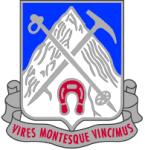 W
WThe 2nd Battalion, 87th Infantry Regiment is a United States Army infantry battalion. Originally formed during World War II, the battalion took part in the Aleutian and Italian campaigns before being deactivated after the war. Later, however, it was reactivated and in recent times has served in the Sinai Peninsula and in Afghanistan.
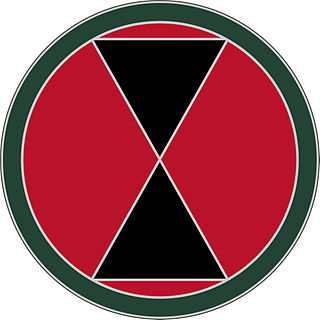 W
WThe 7th Infantry Division is an active duty infantry division of the United States Army based at Joint Base Lewis-McChord charged with sustaining the combat readiness of two Stryker brigade combat teams, a combat aviation brigade, a division artillery headquarters, and a National Guard Stryker brigade combat team, as well as participating in several yearly partnered exercises and operations in support of U.S. Army Pacific and the Indo-Pacific region. The 7th Infantry Division is the only active-duty multi-component division headquarters in the Army. The 7th Infantry Division is also home to two of the Army's newest enabling battlefield capabilities, the Multi Domain Task Force and the Intelligence, Information, Cyber, Electronic Warfare and Space Capabilities, or I2CEWS battalion.
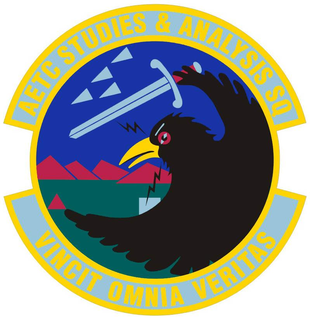 W
WThe Air Education and Training Command Studies and Analysis Squadron is a unit of the United States Air Force stationed at Randolph Air Force Base, Texas, where it reports directly to the headquarters of Air Education and Training Command, evaluating training programs and systems.
 W
WThe 28th Operations Group is the flying component of the United States Air Force 28th Bomb Wing, stationed at Ellsworth Air Force Base, South Dakota.
 W
WThe 54th Fighter Squadron is an inactive United States Air Force unit. Its last assignment was to the 3d Operations Group, being stationed at Elmendorf Air Force Base, Alaska. It was inactivated on 28 April 2000.
 W
WThe 906th Air Refueling Squadron is an active United States Air Force unit. It is an active associate squadron and part of the 375th Air Mobility Wing at Scott Air Force Base, Illinois.
 W
WThe action of 5 July 1942 was a naval engagement fought during the Aleutian Islands Campaign of World War II. During the action, the American submarine USS Growler attacked three Imperial Japanese warships anchored off Kiska island. It was the first action of Growler's career and ended with the loss of dozens of Japanese sailors.
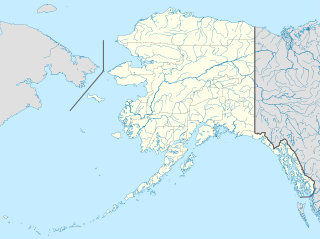 W
WAdak Airport is a state-owned public-use airport located west of Adak, on Adak Island in the Aleutian Islands in the U.S. state of Alaska. The airport is the farthest western airfield with scheduled passenger air service in the entire United States at 176.64W.
 W
WAdak Island is an island near the western extent of the Andreanof Islands group of the Aleutian Islands in Alaska. Alaska's southernmost town, Adak, is located on the island. The island has a land area of 274.59 square miles (711.18 km2), measuring 33.9 miles (54.5 km) on length and 22 miles (35 km) on width, making it the 25th largest island in the United States.
 W
WThe Akutan Zero, also known as Koga's Zero and the Aleutian Zero, was a type 0 model 21 Mitsubishi A6M Zero Japanese fighter aircraft that crash-landed on Akutan Island, Alaska Territory, during World War II. It was found intact by the Americans in July 1942 and became the first flyable Zero acquired by the United States during the war. It was repaired and flown by American test pilots. As a result of information gained from these tests, American tacticians were able to devise ways to defeat the Zero, which was the Imperial Japanese Navy's primary fighter plane throughout the war.
 W
WThe Aleutian Islands campaign was a military campaign conducted by the United States and Japan in the Aleutian Islands, part of the Territory of Alaska, in the American Theater and the Pacific Theater of World War II starting on June 3, 1942. In the only two invasions of the United States during the war, a small Japanese force occupied the islands of Attu and Kiska, where the remoteness of the islands and the challenges of weather and terrain delayed a larger American-Canadian force sent to eject them for nearly a year. The islands' strategic value was their ability to control Pacific transportation routes and so US General Billy Mitchell stated to the U.S. Congress in 1935, "I believe that in the future, whoever holds Alaska will hold the world. I think it is the most important strategic place in the world."
 W
WThe Aleutian Islands World War II National Monument is a U.S. national monument in the Aleutian Islands of Alaska. It is located on three islands in the Alaska Maritime National Wildlife Refuge. It was designated as part of World War II Valor in the Pacific National Monument by an executive order of George W. Bush on December 5, 2008, with sites in Alaska, California, and Hawaii. The John D. Dingell, Jr. Conservation, Management, and Recreation Act, signed into law March 12, 2019, separated the national monument into separate units in each state. It is managed by the United States Fish and Wildlife Service.
 W
WThe Aleutian World War II National Historic Area is a U.S. National Historic Site on Amaknak Island in the Aleutian Island Chain of Alaska. It offers visitors a glimpse of both natural and cultural history, and traces the historic footprints of the U.S. Army Base, Fort Schwatka, located at the Ulakta Head on Mount Ballyhoo. The fort, 800 miles west of Anchorage, the nearest large urban center, was one of four coastal defense posts built to protect Dutch Harbor during World War II; Fort Schwatka is also the highest coastal battery ever constructed in the United States. The other Army coastal defense facilities were Fort Mears, Fort Learnard, and Fort Brumback. Engineers designed the concrete observation posts and command stations to withstand earthquakes and 100 mph winds. Although today, many of the bunkers and wooden structures of Fort Schwatka have collapsed, the gun mounts and lookouts are among the most intact in the country.
 W
WAlexai Point Army Airfield is an abandoned World War II airfield with two runways laid across Alexai Point on Attu Island, Alaska. The remains of the Seabee built airbase are located about 4 miles east of the closed Casco Cove Coast Guard Station, directly across Massacre Bay.
 W
WAmchitka is a volcanic, tectonically unstable island in the Rat Islands group of the Aleutian Islands in southwest Alaska. It is part of the Alaska Maritime National Wildlife Refuge. The island, with a land area of roughly 116 square miles (300 km2), is about 42 miles (68 km) long and 1 to 4 miles wide. The area has a maritime climate, with many storms, and mostly overcast skies.
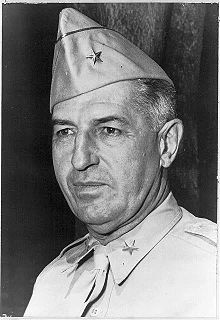 W
WArchibald Vincent Arnold was a major general of the United States Army during World War II.
 W
WAttu is an island in the Near Islands. It is the westernmost point of the U.S. state of Alaska. The island became uninhabited in 2010, making it the largest uninhabited island in the United States.
 W
WThe Battle of Attu, which took place on 11–30 May 1943, was a battle fought between forces of the United States, aided by Canadian reconnaissance and fighter-bomber support, and Japan on Attu Island off the coast of the Territory of Alaska as part of the Aleutian Islands Campaign during the American Theater and the Pacific Theater. In contrast with the tropical climate in the Pacific, Attu is the only land battle in which Japanese and American forces fought in snowy conditions.
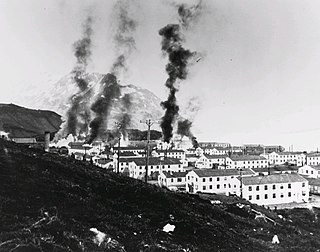 W
WThe Battle of Dutch Harbor took place on June 3–4, 1942, when the Imperial Japanese Navy launched two aircraft carrier raids on the Dutch Harbor Naval Operating Base and U.S. Army Fort Mears at Dutch Harbor on Amaknak Island, during the Aleutian Islands Campaign of World War II. The bombing marked the first aerial attack by an enemy on the continental United States, and was the second time in history that the continental U.S. was bombed by someone working for a foreign power, the first being the accidental bombing of Naco, Arizona in 1929.
 W
WThe Battle of the Komandorski Islands was a naval battle between American and Imperial Japanese forces which took place on 27 March 1943 in the North Pacific, south of the Soviet Komandorski Islands. The battle was a daylight surface engagement in which air support played no role and in which the inferior American force escaped greater damage after the Japanese chose to withdraw.
 W
WSimon Bolivar Buckner Jr. was a lieutenant general in the United States Army during World War II. He served in the Pacific Theater of Operations and commanded the defenses of Alaska early in the war. Following that assignment, he was promoted to command the Tenth Army, which conducted the amphibious assault on the Japanese island of Okinawa on April 1, 1945. He was killed during the closing days of the Battle of Okinawa by enemy artillery fire, making him the highest-ranking United States military officer lost to enemy fire during World War II. He would remain the highest-ranking U.S. military member to be killed by a foreign armed action until the death of Lieutenant General Timothy Maude during the September 11 attacks.
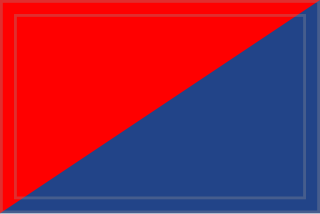 W
WThe 6th Canadian Infantry Division was an infantry division of the Canadian Army, formed in 1942 during the Second World War. It was attached to Pacific Command. The division had a brigade sent to the Aleutian Islands Campaign, particularly at Kiska, but never saw action. The 6th Division was to have been part of a proposed Commonwealth Corps, formed for a planned invasion of Japan, but was disbanded in 1945, after the war was ended by the bombing of Hiroshima and Nagasaki.
 W
WCape Field at Fort Glenn was a military site significant for its role in World War II. It consists of Fort Glenn, an airfield of the United States Army Air Corps later renamed Cape Air Force Base, and the adjacent Naval Air Facility Otter Point, both located on Umnak Island in the Aleutian Islands of southwestern Alaska. The site was listed on the National Register of Historic Places and declared a National Historic Landmark in 1987.
 W
WCape Air Force Base also known as Fort Glenn Army Air Base, is a site significant for its role in World War II fighting, operating alongside Naval Air Facility Otter Point.
 W
WCastner's Cutthroats was the unofficial name for the 1st Alaskan Combat Intelligence Platoon (Provisional), also known as Alaskan Scouts. Castner's Cutthroats fought during World War II and were instrumental in defeating the Japanese during the Aleutian Islands Campaign. The unit was composed of just sixty-five men selected to perform reconnaissance missions in the Aleutian Islands during the war.
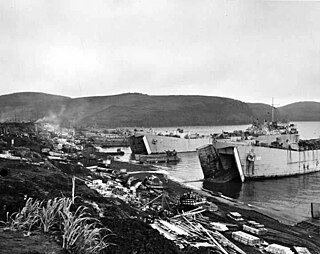 W
WOperation Cottage was a tactical maneuver which completed the Aleutian Islands campaign. On August 15, 1943, Allied military forces landed on Kiska Island, which had been occupied by Japanese forces since June 1942.
 W
WThe Dutch Harbor Naval Operating Base and Fort Mears were the two military installations built next to each other in Dutch Harbor, on Amaknak Island of the Aleutian Islands in Alaska, by the United States in response to the growing war threat with Imperial Japan during World War II. In 1938, the Navy Board recommended the construction which began in July 1940. The first United States Army troops arrived in June 1941 and an air base constructed by the United States Navy was finished in September 1941. At the time of the surprise attack on Pearl Harbor, these were the only military installations in the Aleutian Islands.
 W
WThe Eleventh Air Force (11 AF) is a Numbered Air Force of the United States Air Force Pacific Air Forces (PACAF). It is headquartered at Joint Base Elmendorf–Richardson, Alaska.
 W
WThe 1st Special Service Force was an elite American–Canadian commando unit in World War II, under the command of the United States Fifth Army. The unit was organized in 1942 and trained at Fort William Henry Harrison near Helena, Montana in the United States. The Force served in the Aleutian Islands, and fought in Italy, and southern France before being disbanded in December 1944.
 W
WMajor General Harry Wickwire Foster was a senior Canadian Army officer who commanded two Canadian divisions during World War II. He served in both the Pacific and European theatres.
 W
WRobert Carlisle Giffen was an admiral in the United States Navy.
 W
WKiichirō Higuchi was a lieutenant general in the Imperial Japanese Army in World War II.
 W
WBoshirō Hosogaya was an admiral in the Imperial Japanese Navy during World War II.
 W
WThe Japanese occupation of Attu was the result of an invasion of the Aleutian Islands in Alaska during World War II. Imperial Japanese Army troops landed on 7 June 1942 the day after the invasion of Kiska. Along with the Kiska landing, it was the first time that the continental United States was invaded and occupied by a foreign power since the War of 1812, and was the second of the only two invasions of the United States during World War II. The occupation ended with the Allied victory in the Battle of Attu on 30 May 1943.
 W
WThe Japanese occupation of Kiska took place between 6 June 1942 and 28 July 1943 during the Aleutian Islands Campaign of the American Theater and the Pacific Theater of World War II. The Japanese occupied Kiska and nearby Attu Island in order to protect the northern flank of the Japanese Empire. Along with the Attu landing the next day, it was the first time that the continental United States was occupied by a foreign power since the War of 1812, and was one of the only two invasions of the United States during World War II.
 W
WKakuji Kakuta , was an admiral in the Imperial Japanese Navy during World War II. He is noted for his role in commanding Japanese naval aviation units in the Pacific War.
 W
WShiro Kawase was a vice admiral in the Imperial Japanese Navy during World War II. He was a torpedo expert and his extensive experience as a commander of destroyers and destroyer formations made him more knowledgeable about the escort of convoys than most Japanese commanders of his time. He is best known for his command of the 5th Fleet during the latter stages of the Aleutians campaign in the spring and summer of 1943.
 W
WThomas Cassin Kinkaid was an admiral in the United States Navy, known for his service during World War II. He built a reputation as a "fighting admiral" in the aircraft carrier battles of 1942 and commanded the Allied forces in the Aleutian Islands Campaign. He was Commander Allied Naval Forces and the Seventh Fleet under General of the Army Douglas MacArthur in the Southwest Pacific Area, where he conducted numerous amphibious operations, and commanded an Allied fleet during the Battle of Leyte Gulf, the largest naval battle of World War II and the last naval battle between battleships in history.
 W
WKiska is an island in the Rat Islands group of the Aleutian Islands of Alaska. It is about 22 miles (35 km) long and varies in width from 1.5 to 6 miles. It is part of Aleutian Islands Wilderness and as such, special permissions are required to visit it. The island has no permanent population.
 W
WThe Landing at Amchitka was the amphibious landing operation and occupation of Amchitka island by American forces during the Aleutian Islands Campaign.
 W
WLook to the North is a 22-minute 1944 Canadian documentary film, made by the National Film Board of Canada (NFB) as part of the wartime Canada Carries On series. The film was produced and directed by James Beveridge. The film's French version title is Vers le Nord.
 W
WCharles Horatio "Soc" McMorris was an American rear admiral during World War II, most notably commanding forces at the Battle of the Komandorski Islands during the Aleutian Islands Campaign.
 W
WThe Nakajima A6M2-N was a single-crew floatplane based on the Mitsubishi A6M Zero Model 11. The Allied reporting name for the aircraft was Rufe.
 W
WNaval Air Facility Adak, was a United States Navy airport located west of Adak, on Adak Island in the U.S. state of Alaska. After its closure in 1997, it was reopened as Adak Airport. The facility was designated a National Historic Landmark for its role in World War II, although most of its elements from that period have been demolished or lie in ruins.
 W
WSentarō Ōmori , was an admiral in the Imperial Japanese Navy during World War II.
 W
WPincers on Japan is a 19-minute 1944 Canadian documentary film, made by the National Film Board of Canada (NFB). The film was directed by James Beveridge, who also produced and directed a similar NFB documentary, Look to the North. The film's French version title is Piège à Nippon.
 W
WReport from the Aleutians is a 1943 documentary propaganda film produced by the U.S. Army Signal Corps about the Aleutian Islands Campaign during World War II. It was directed and narrated by John Huston.
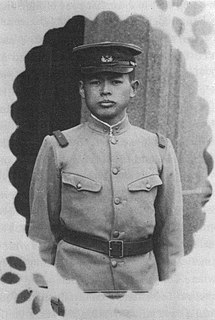 W
WPaul Nobuo Tatsuguchi , sometimes mistakenly referred to as Nebu Tatsuguchi, was a surgeon in the Imperial Japanese Army (IJA) during World War II. He was killed during the Battle of Attu on Attu Island, Alaska, United States on May 30, 1943.
 W
WRobert Alfred Theobald, nicknamed "Fuzzy", was a United States Navy officer who served in World War I and World War II, and achieved the rank of rear admiral. In retirement, he was the author of the 1954 book The Final Secret of Pearl Harbor: The Washington Background of the Pearl Harbor Attack.
 W
WColonel Yasuyo Yamasaki was a Japanese Army officer who commanded the Japanese forces on Attu during the Battle of Attu in World War II.